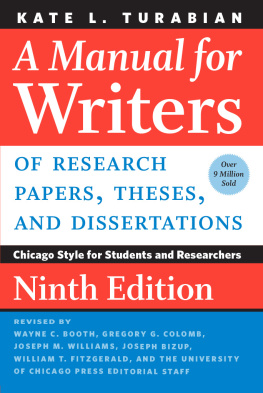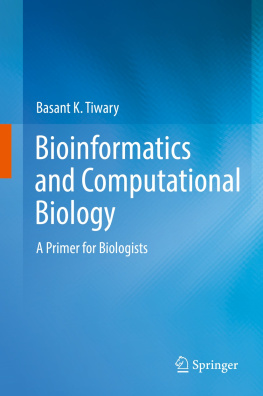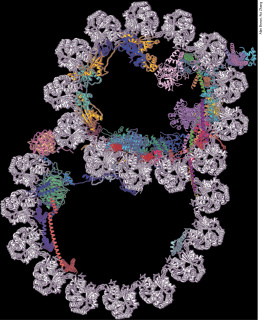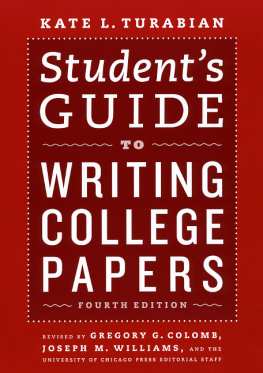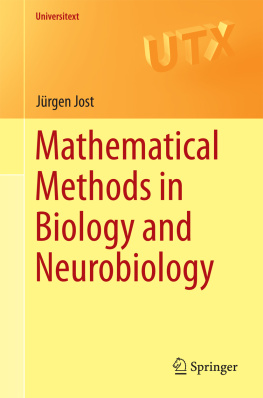Contents
Landmarks
List of Figure
Page List
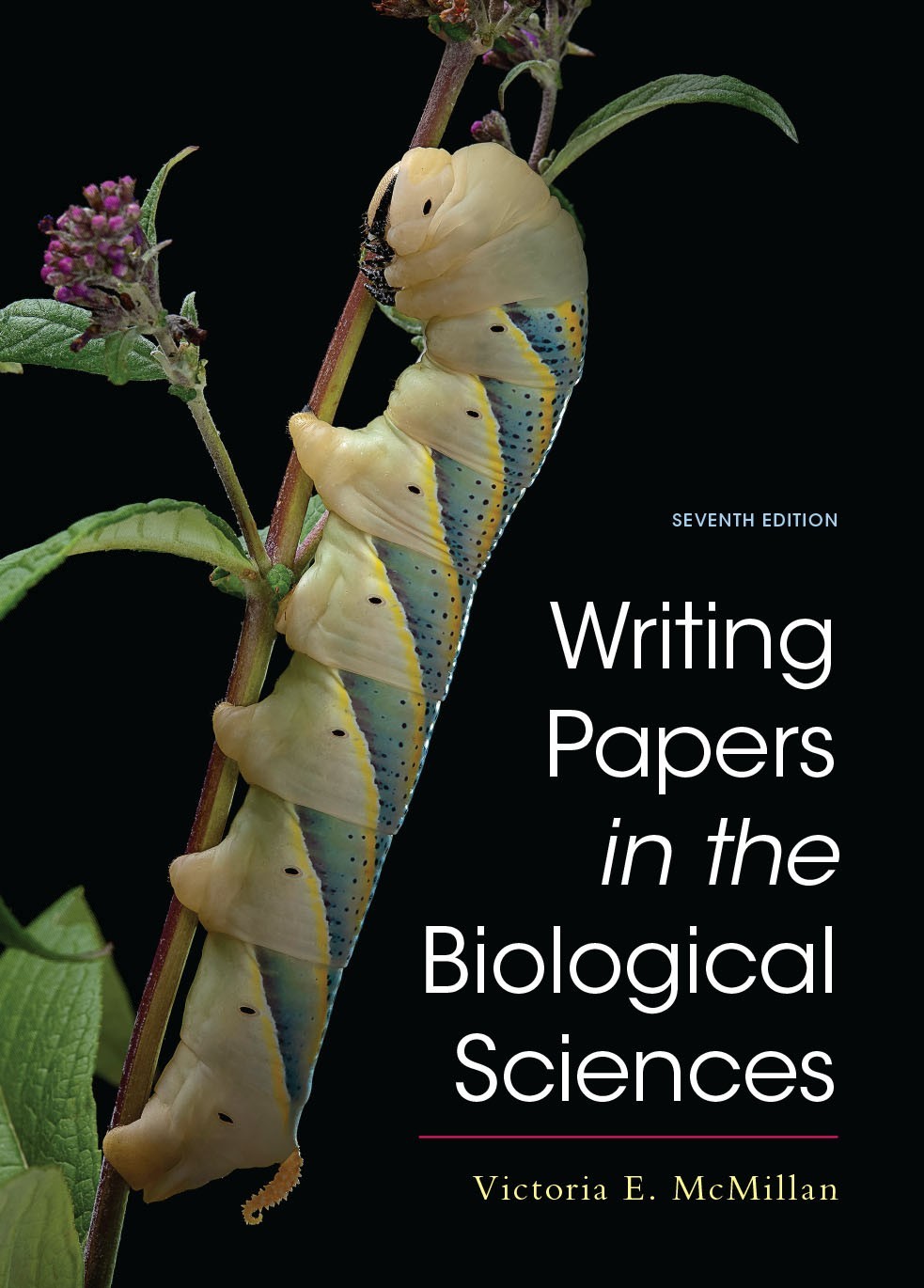
The front cover has a photo of a caterpillar on the branch of a plant. The text, Seventh Edition, is on the right-hand side, followed by the name of the book Writing Papers in the Biological Sciences and the authors name Victoria E. McMillan.
Checklists for Writing and Research
Models for Students
Writing Papers in the Biological Sciences
Vice President: Leasa Burton
Program Director, English: Stacey Purviance
Senior Program Manager: Laura Arcari
Director of Content Development: Jane Knetzger
Associate Development Editor: Suzanne H Chouljian
Assistant Editor: Annie Campbell
Director of Media Editorial: Adam Whitehurst
Marketing Manager: Vivian Garcia
Senior Director, Content Management Enhancement: Tracey Kuehn
Senior Managing Editor: Michael Granger
Senior Manager of Publishing Services and Content Project Manager: Andrea Cava
Lead Workflow Project Manager: Paul W. Rohloff
Production Supervisor: Robert Cherry
Director of Design, Content Management: Diana Blume
Interior Design: Janis Owens
Cover Design: William Boardman
Director, Rights and Permissions: Hilary Newman
Permissions Associate: Maisie Howell
Photo Permissions Editor: Angie Boehler
Project Management: Lumina Datamatics, Inc.
Project Manager: Jogender Taneja, Lumina Datamatics, Inc.
Composition: Lumina Datamatics, Inc.
Cover Image: Paul Starosta/Stone/Getty Images
Copyright 2021, 2017, 2012, 2006 by Bedford/St. Martins. All rights reserved. No part of this book may be reproduced, stored in a retrieval system, or transmitted in any form or by any means, electronic, mechanical, photocopying, recording, or otherwise, except as may be permitted by law or expressly permitted in writing by the Publisher.
ISBN 978-1-319-40302-7 (epub)
123456252423222120
Acknowledgments
Acknowledgments and copyrights appear on the same page as the text and art selections they cover; these acknowledgments and copyrights constitute an extension of the copyright page.
At the time of publication all internet URLs published in this text were found to accurately link to their intended website. If you do find a broken link, please forward the information to so that it can be corrected for the next printing.
For information, write: Bedford/St. Martins, 75 Arlington Street, Boston, MA 02116
Preface
As a biologist who also spent many years teaching composition, Ive seen students with strong backgrounds in biology struggle with the writing tasks and challenges unique to their discipline. Biologists need to think about science creatively, and they need to write about science clearly, accurately, and concisely. In fact, these two processes, thinking and writing, are as interdependent in science as they are in any other field. Unfortunately, however, it is difficult to fit any extensive discussion of scientific writing into a regular semester-long biology course. This book can substitute for such discussion, serving as a supplement for courses requiring laboratory reports or longer written assignments. Although intended primarily for undergraduates who need an introduction to the aims and format of biological writing, it is also useful for more experienced students, including masters and doctoral candidates who are preparing dissertations or manuscripts for publication. I also hope this book will continue to find its place in the growing number of courses on scientific writing at the undergraduate and graduate level.
Like its predecessors, the seventh edition is organized as a self-help manual, offering straightforward solutions to common problems and numerous examples of both faulty and effective writing. All of the books most important features rules highlighted with bullets, numerous and diverse examples, clear and concise explanations, checklists, and a detailed index have been retained, including the spiral binding for easier use. The seventh edition, however, features a greater diversity of examples from different subdisciplines, including cellular and molecular biology, animal ecology, microbiology, and genetics. New and improved Tech Talk boxes appear throughout the text, offering best practices for searching databases and using up-to-date resources designed for charts, graphs, note taking, and documentation.
The Introduction discusses the role of both formal and informal writing in biology and gives an overview of the diversity of writing tasks that professional biologists face.
guides students through the complex processes of locating and using biological literature, tasks integral to the writing process. For the seventh edition, this section of the book has been thoroughly expanded and updated to address the ever-changing parameters of research. The chapter describes a variety of scientific databases and provides a sample database search along with tips on evaluating online sources. Also included are sections on how to read scientific papers, how to take good notes, how to avoid plagiarism, and (new to this edition) Tech Talk boxes and detailed instruction on how to use Zotero software to enhance collaborative research and writing.
introduce students to handling, analyzing, and presenting data, including coverage of Microsoft Excels graph and diagram capabilities. Both chapters also give advice on experimental design and the use of statistics in writing and in research.
discusses the review paper, which resembles the library-oriented term paper assignments of advanced courses. Basic strategies for researching and writing a scientific review are presented along with student examples.
Students often get confused about how to use literature citations and how to prepare the References (sometimes called the Literature Cited) section of their papers.. For the seventh edition, we expanded coverage on several accessible tools to help students compile and format their References sections.
Many students are uncertain how to begin a paper or revise it effectively. discusses manuscript format, provides proofreading strategies, explains how to write an Acknowledgments section, and lists symbols and abbreviations commonly used in biology.
Students often underestimate the role that writing can play in learning difficult material and in studying for examinations. offers strategies for taking notes, making laboratory drawings, getting the most out of textbooks, preparing for short-answer and laboratory exams, and creating individualized study guides using note-taking software. It also includes examples of poor and improved essay examination answers.
Finally, the seventh edition features coverage of other forms of biological writing that students often face. ), and presents strategies for preparing research proposals, PowerPoint presentations, letters of application, rsums, and curricula vitae, with attention to searching and applying for jobs.
Throughout the book, I have tried to address the special demands and challenges of academic assignments in the context of how and why professional biologists write. I hope this handbook will convince students that scientific writing, including their own, need not be tedious and cumbersome, but can be clear, crisp, incisive, and engaging.
Bedford/St. Martins Puts You First



